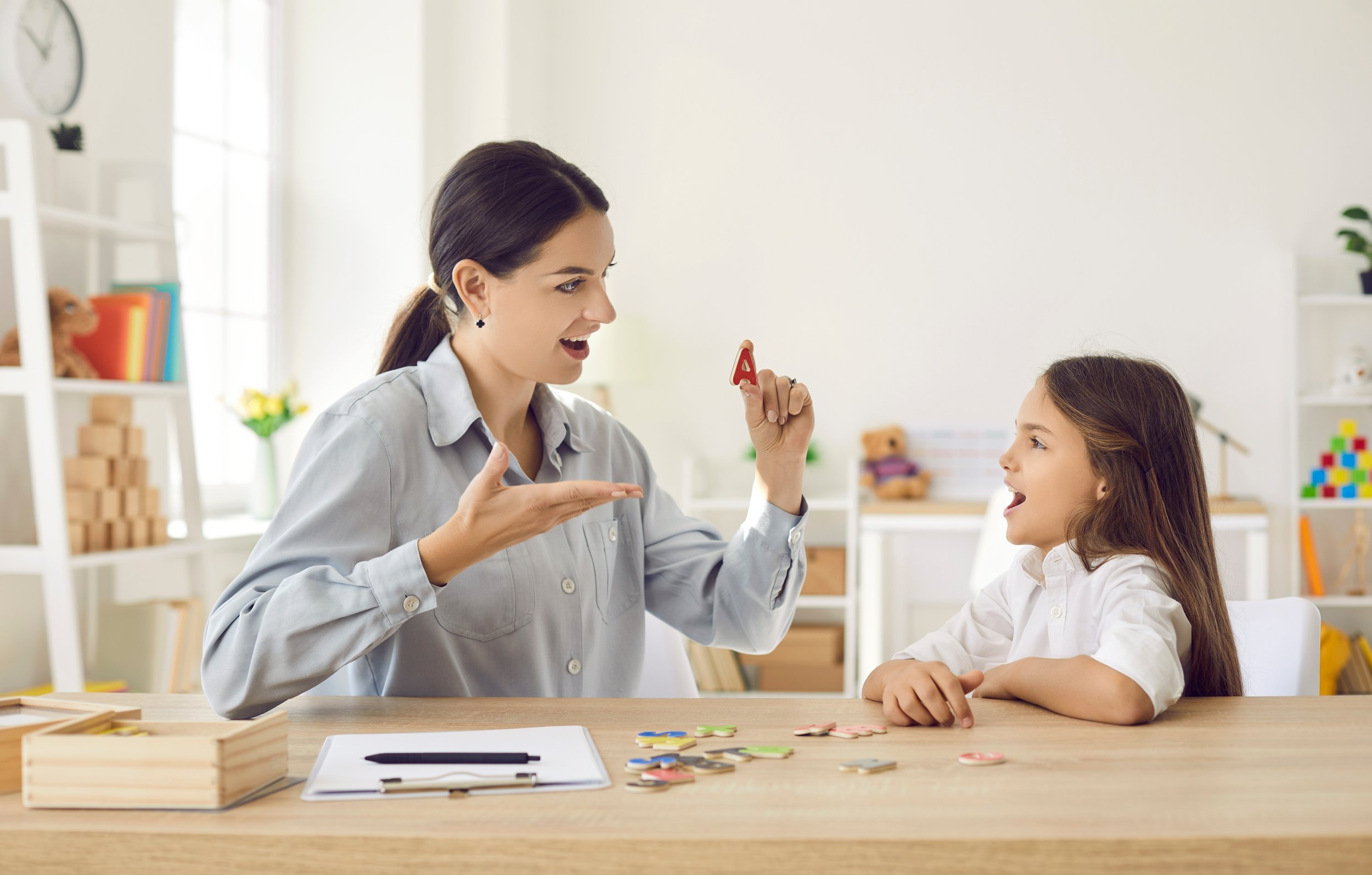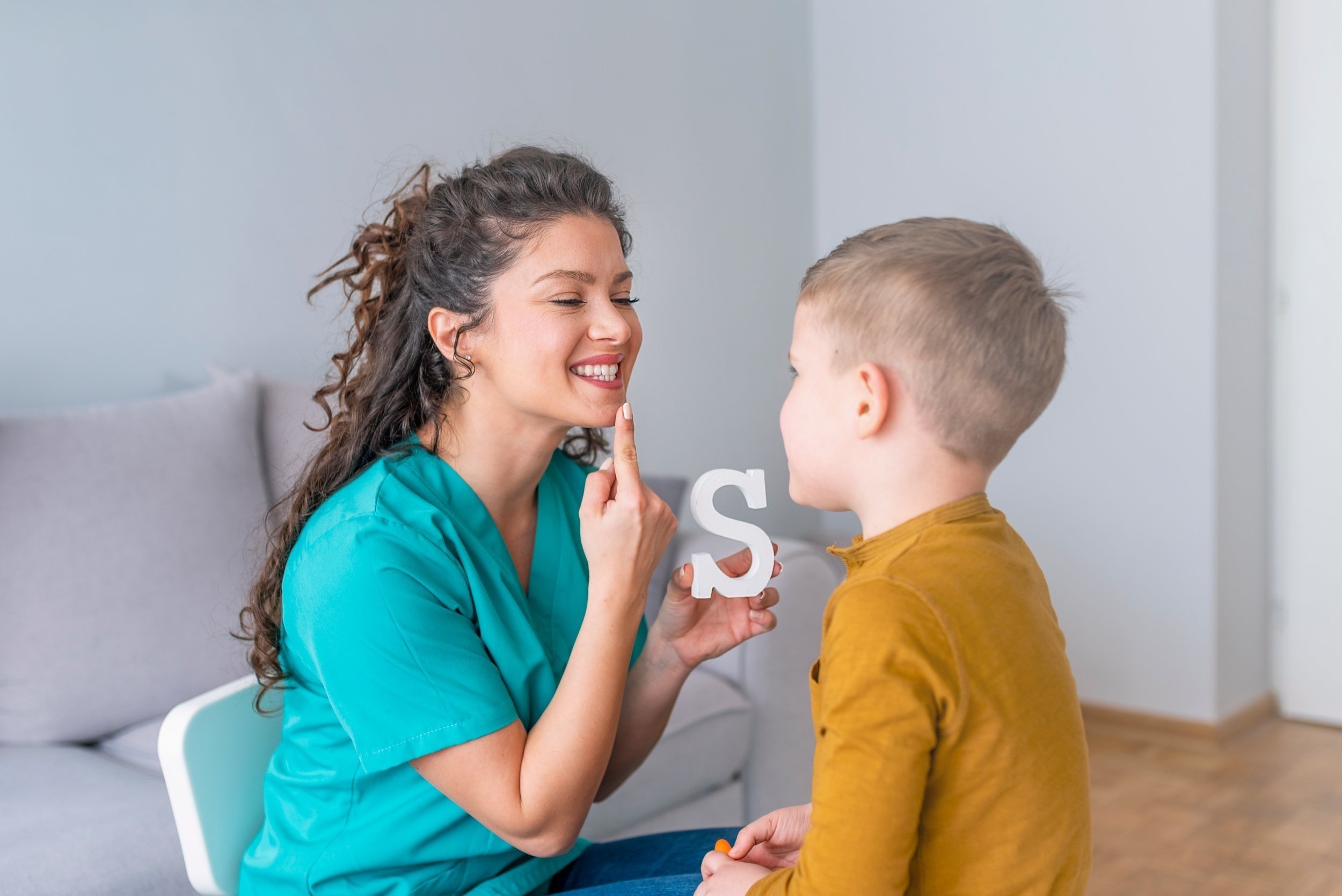
Helping your child reach their speech and language goals
Providing in home services in the Bozeman area and Teletherapy throughout Montana
At Gateway Pediatric Therapy our team will create a specialized treatment plan for your child, tailored to their unique needs and goals. We work closely with parents and caregivers to provide guidance, feedback, and education.
How it works
Initial Consultation
We provide a free consultation where we learn your concerns for your child and determine if a speech-language evaluation is recommended for them.
Evaluation
In order to better understand your child’s speech and language history, current skills, and areas of need, we conduct a thorough evaluation including parent input, assessments, and clinical observation.
Sessions
A licensed speech-language pathologist will use evidence-based research and practices to provide targeted one-on-one treatment. You will also receive weekly home exercises so you can support your child in continuing to progress between sessions.
Progress Reports
Follow your child’s goals and progress quarterly (or as requested) as you get closer to graduation.
Speech and Language Milestones
It’s important to remember that development varies among children, and hitting these milestone slightly earlier or later is still within the typical range.
-
Babbling: Your baby uses a variety of consonant and vowel sounds in their babbling, resembling real speech.
Gestures: They begin to use gestures like waving, pointing, or clapping to communicate.
Name Recognition: Responds when their name is called and turns towards the sound.
Simple Words: By their first birthday, most babies start saying simple words like “mama,” “dada,” and a few other simple sounds with meaning.
Comprehension: Understands simple commands, familiar words, and yes/no questions.
Social Communication: Engages in back-and-forth babbling, imitates sounds, and responds to others’ expressions.
-
Vocabulary: By 18 months, a toddler may have a vocabulary of around 50 words.
Naming Objects: They can point to and name familiar objects or people.
Simple Requests: They start using one- or two-word phrases to make simple requests like “more milk” or “up please.”
Following Simple Commands: They can understand and respond to basic commands like “come here” or “give me the ball.”
Gestures: Gestures like waving “bye-bye,” pointing, and nodding become more frequent.
-
Vocabulary: A typical 2-year-old may have a vocabulary of 200-300 words or more.
Articulation: While speech might still be imperfect, there’s gradual improvement in pronunciation and clarity. Parents and caregivers understand them about 50% of the time or more.
Expressive Language: They begin using two- to three-word sentences, expressing simple ideas and making requests. They express thoughts, feelings, and needs more effectively using words and short phrases.
Simple Narration: Attempts to tell short stories or recount events using basic sentences.
Imitation: Imitates adult conversations and tries to use new words they hear.
Receptive Language: They can answer basic questions like “What’s your name?” or “Where’s the ball?” They can follow one-step instructions, like “Give me the book” or “Show me the dog” and basic 2-step directions such as “get the ball and bring it to me.”
Social Communication: Engages in parallel play with other children, shares toys, and attempts to communicate with peers.
-
Vocabulary: Their vocabulary expands further, reaching around 1,000 words or more.
Expressive Language: They start forming longer and more complex sentences, using a mix of nouns, verbs, and adjectives. They express thoughts, preferences, and ideas more coherently and clearly. Tells simple stories or describes events in a sequential manner.
Articulation: Many speech sounds are mastered by this age, although some sounds may still be developing. Their speech should become increasingly intelligible: about 75% for parents and caregivers.
Following Directions: They can follow two- or three-step instructions, demonstrating improved auditory comprehension.
Play: Pretend play becomes more elaborate, with imaginative scenarios and dialogue.
Social Communication: Children show more interest in playing with peers, engaging in cooperative activities and conversations. They engage in back-and-forth conversations, ask and answer questions, and stay on topic.
-
Vocabulary: They possess a broader vocabulary, including more complex words and concepts.
Articulation: While minor articulation errors might persist on sounds such as /l, r, th/, their speech becomes highly intelligible to others.
Expressive Language: Children use longer and grammatically more accurate sentences to express ideas and ask questions with an average sentence length of at least 4-5 words. They can tell simple stories with a beginning, end, and important details. Minor grammatical errors such as irregular plurals, past tense verbs, and pronouns may persist.
Receptive Language: Answers basic yes/no and wh- questions (who, what, where). Begins to grasp concepts like time (yesterday, tomorrow), size (big, small), and spatial relationships (over, under). They can one- to two-step instructions and carry out tasks accordingly.
Social Communication: Engages in longer and more elaborate conversations, shares and takes turns, plays appropriately with peers.
Play: Uses their imagination to engage in elaborate pretend play, invent intricate scenarios and use rich dialogue.
Fluency: Many young children have dysfluencies in their speech. They may repeat sounds or word, elongate sounds, or revise what they are saying. There should be no tension or frustration when speaking.
Literacy: Showing interest in books, recognizing some letters and letter sounds, rhyming, and possibly attempting to write their name or simple words.
-
Vocabulary: Their vocabulary continues to expand, including more specialized and abstract words.
Articulation: Their speech is largely clear and intelligible, with few remaining articulation errors (mainly on /r/ or /th/).
Expressive Language: They use increasingly complex sentence structures with few grammatical errors. They tell longer, more detailed, and coherent stories with a clear plot.
Receptive Language: Follows two-step directions, responds to questions with detailed answers, and retells stories in a logical sequence and with accurate details.
Social Communication: Engages in more cooperative play, negotiating roles and scenarios with peers. Expresses thoughts, feelings, and ideas clearly. Understands and uses jokes, riddles, and other forms of humor that involve language play.
Fluency: Speaks smoothly and clearly. Shows no tension, sound repetitions, or prolonged sounds when speaking. May have some interjections such as “um” or word repetitions such as “I run, I run, I run fast.”
Literacy: Correlates letters with their speech sounds, understands rhyming words and manipulates sounds in words (e.g. adding or removing first/last sounds), tells stories by looking at pictures, recognizes and writes all letters and basic words.
-
Articulation: Children should be understood nearly 100% of the time by familiar and unfamiliar people. They should have mastery of all sounds.
Expressive Language: Answers open-ended questions with narrative storytelling. Retells stories and events in order. Uses complete, grammatically correct sentences.
Receptive Language: Follows multi-step directions and answers wh- questions (who, what, where, when, why) appropriately. Follows conversation and stories read aloud and answers comprehension questions.
Social Communication: Takes turns in conversation, asks questions and makes comments to keep a conversation going. Starts conversations and remains on topic. Perspective-taking emerges (e.g. “putting yourself in someone else’s shoes”).
Fluency: Speaks smoothly and clearly. Shows no tension, sound repetitions, or prolonged sounds when speaking. May have some interjections such as “um.”
Literacy: Knows many sight words, reads smoothly, writes neatly, uses writing conventions (punctuation, capitals, etc.), spells common words correctly.
-
Articulation: They speak clearly and are well understood by all communication partners.
Expressive Language: They are using more complex language and vocabulary, longer sentences, and accurate use of grammatical structures. Tells longer narratives with details and a clear beginning, middle, and end. They engage in more abstract thinking, express opinions, and participate in debates, demonstrating better reasoning skills.
Receptive Language: Follows multi-step directions, understands figurative language such as idioms, and metaphors. Understands and analyzes complex texts and stories.
Social Communication: They develop more advanced social communication skills, such as understanding sarcasm, humor, and varying tones of voice. Understands others point of view and discusses differences of opinion.
Fluency: Speaks smoothly without tension, sound repetitions, or prolonged sounds. May have some interjections such as “um.”
Try a consultation for free and see if it’s right for you.
There’s no commitment, pressure, or obligation.
FAQ’s
-
They can start as early as 9-12 months! Early intervention has been proven to have improved outcomes for children. What does this mean? Starting therapy sooner for children in need can lead to quicker progress and less overall time in therapy.
-
If your child is not meeting the milestones for their age (within 1-3 months), discuss your concerns with their pediatrician or schedule a consultation with a speech-language pathologist.
-
We accept private pay only at this time; however, we can send you a superbill for all services which you can send to your insurance company for reimbursement.
-
Each child has unique needs and services are recommended accordingly. There is no “one size fits all” timeline. At your evaluation, we will discuss how often we recommend sessions (e.g. 1x/week, 2x/week, etc.) based on your child’s needs. Throughout the intervention process, we will continue to measure progress and discuss goals and plans for discharge/graduation accordingly.



